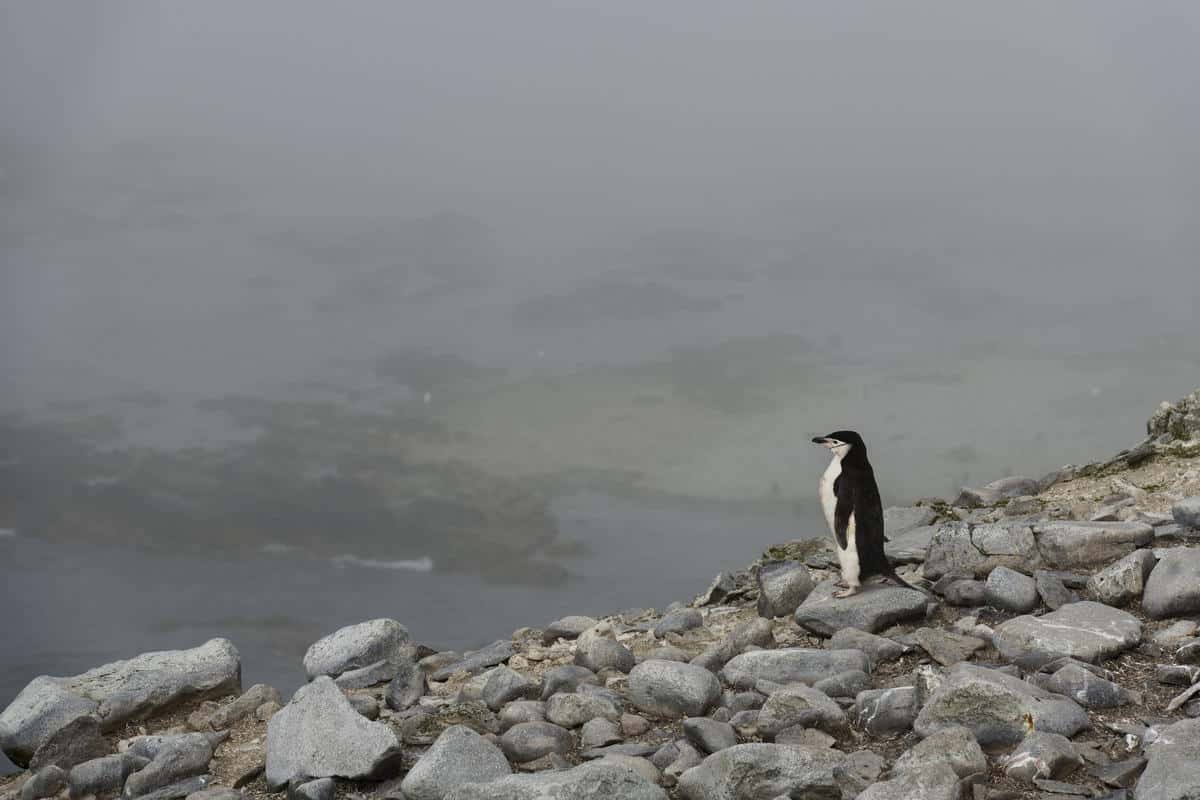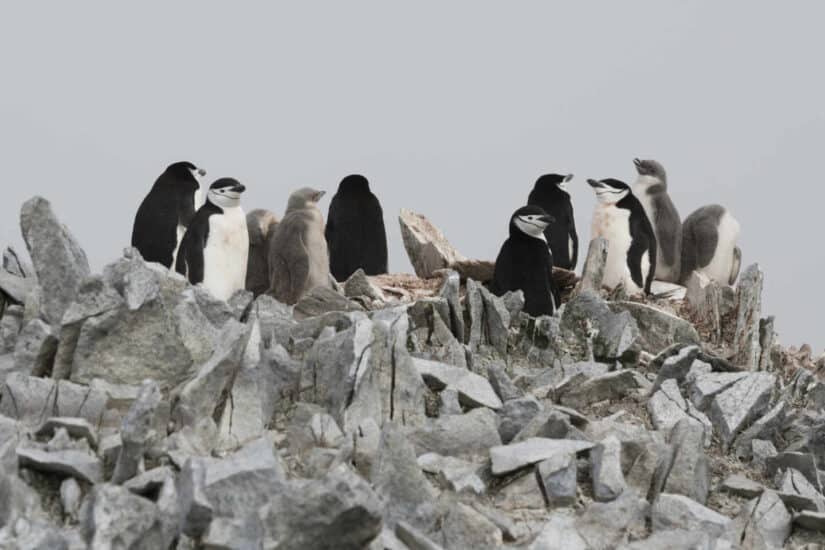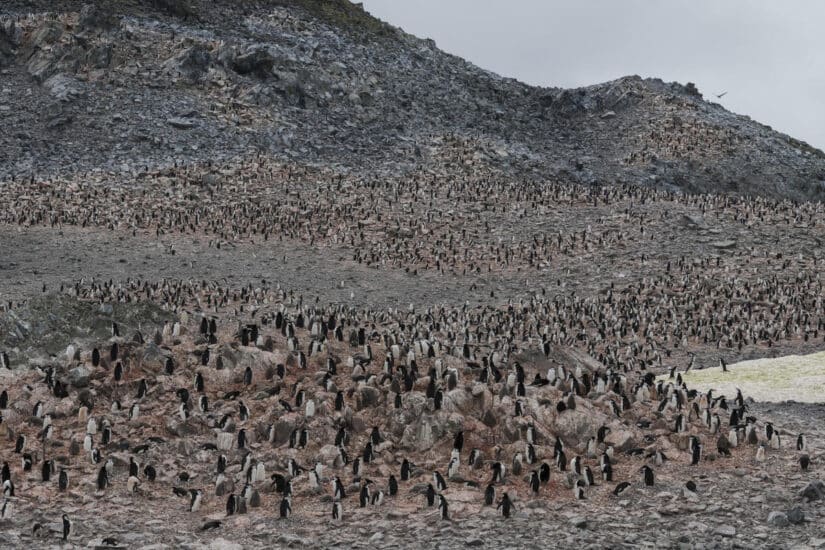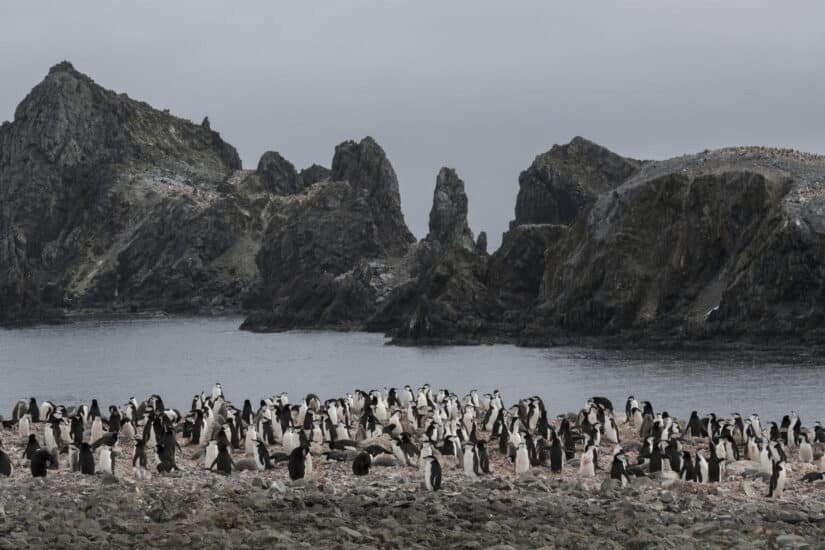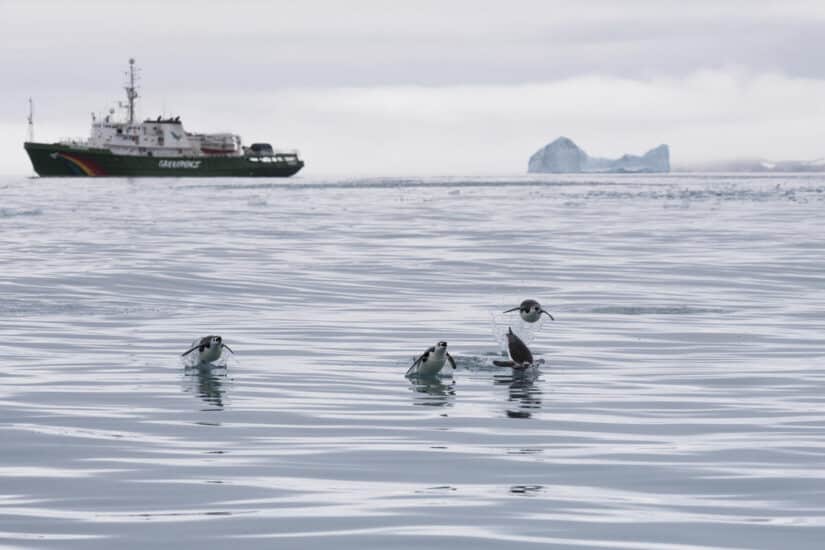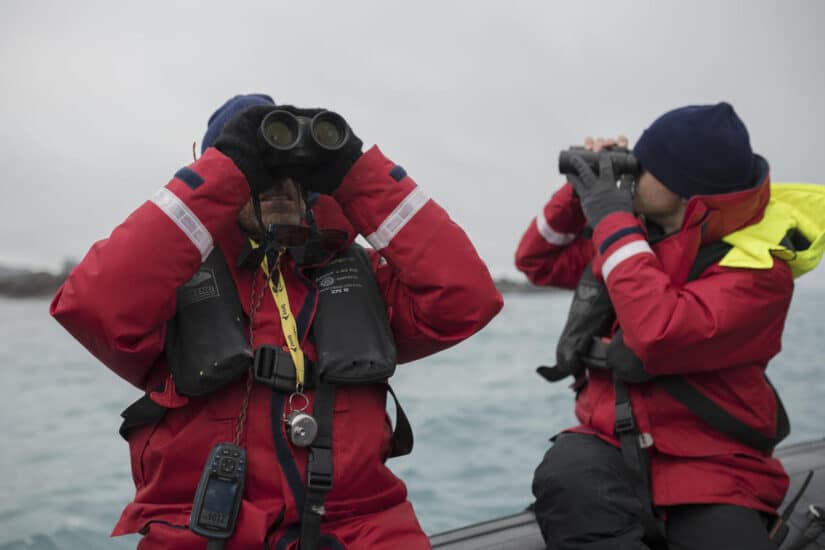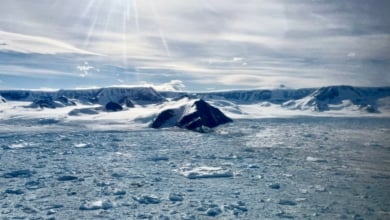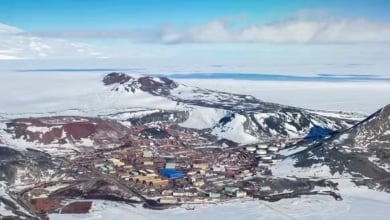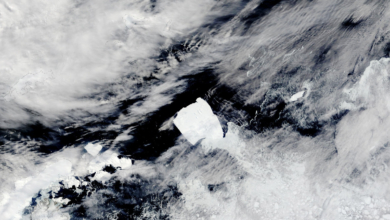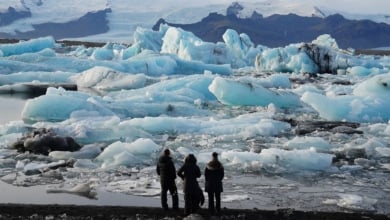La población de pingüinos barbijo, una de las especies más desconocidas en Isla Elefante (Antártida), ha caído un 60%, llegando incluso hasta el 77% en algunas colonias, según han indicado varios análisis de 35 colonias de esta especie. Este drástico descenso ha sido hallado por científicos que acompañan a Greenpeace en la Antártida, dentro de la expedición de "Polo a Polo". Se trata de una cifra muy baja en comparación con el último recuento de 1971. Científicos señalan al cambio climático como principal causa de la reducción de estas especies.
Pingüinos barbijo en la Antártida
La población de parejas reproductoras de pingüinos barbijo es de 52.786 en Isla Elefante en la Antártida. Cifra muy baja en comparación con encuestas anteriores que apuntaban a 122.550 parejas en 1971. Estas significativas disminuciones muestran que el cambio del océano Austral en el último medio siglo, "está afectando a la cadena alimentaria de especies como los pingüinos barbijo", explica Heather J. Lyinch, investigadora principal de la expedición.
100.000 parejas de la especie
Dentro de la expedición 'Polo a Polo', un equipo de científicos de la Universidad de Stony Brook y de Northeastern, Estados Unidos, han analizado una serie de colonias relativamente grandes de esta especie en Low Island, mediante técnicas de topografía manual, drones e inteligencia artificial. Se estima que unas 100.00 parejas de esta especie han sido muestreadas desde la tierra.
Cambio climático
Científicos señalan al cambio climático como causa de la reducción de estas especies. Las especies de la Antártida han visto transformados sus hábitats ya que "tiene que generar mayores distancias para llegar a sus lugares de alimentación y el cambio de temperatura del agua supone un cambio de alimento para ellos", explica Mauricio Ceballos, coordinador de la campaña de océanos de Greenpeace. De hecho, la Antártida batió el récord de temperatura máxima tras alcanzar los 18,3ºC, superando así su marca anterior de 17,5ºc de marzo de 2015.
MY Esperanza en la Antártida
El MV Esperanza, barco de la flota de Greenpeace frente a Isla Elefante, ha estado investigando y analizado esta zona. Greenpeace pide el establecimiento de tres propuestas de santuario en la Antártida que protejan los océanos. Pilar Marcos, bióloga marina de Greepeace, pide urgentemente "santuarios libres de actividad humana dañina, no solo en la Antártida sino en todos los océanos".
Tratado Global
La organización ecologista reclama desde hace más de un año un Tratado Global que establezca una red de santuarios oceánicos que protejan el 30% de los océanos del planeta para 2030. Se necesita esta protección para que especies como los pingüinos barbijo puedan desarrollar su vida en la Antártida.
